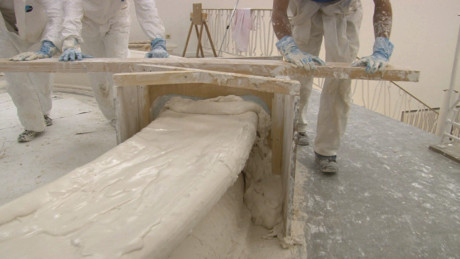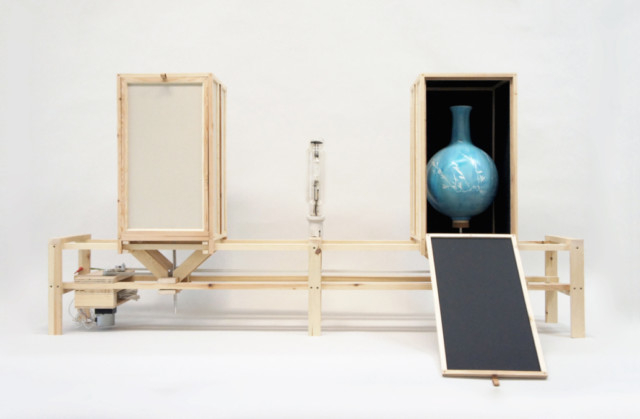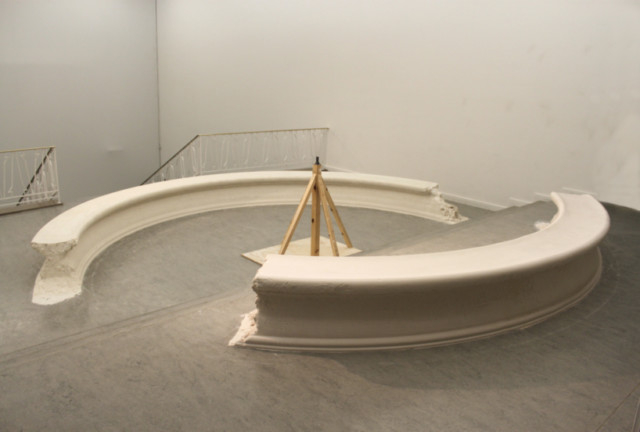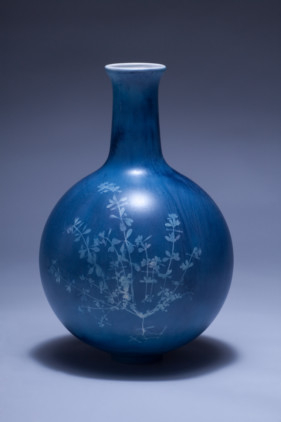
At a time when the conventional world of design was liberating itself, British designer Tim Simpson and Dutch designer Sarah van Gameren, who met at the Royal College of Arts, London, found themselves at the epicentre of new-design wave, as they contemplated career paths.
“We were both initially drawn to art but have always been looking for the relationship with a user or audience,” explains Gameren. “At the time, design had fallen in the hands of a new generation of designers and we thought there could be an opportunity to reinvent the profession.”
And they exactly did that. Their creations are born of a unique relationship they have developed between design and time. The most arresting example being the stunning black wax chandelier — the Big Beast.
“It started with the invention that we can dip a string of wick in wax, similar to the way a candle is made, but with the right configuration this could become a complete chandelier,” says Simpson. Working with a clockmaker, they created a system of 12 chandeliers balanced on two rings, each being dipped into wax one after the other over a 12 hour period of time. “This was very much our first step to making design work that embraces the notion of time.”
They owe their unique approach to the star designer and their lecturer at the RCA, Ron Arad. “His creative vision and open minded approach to design made the Design Products department a place where you could work autonomously within the broadest spectrum of design and beyond.”
While marrying technology and traditional materials has become their calling card, they insist they are not “that” interested in history or tradition.
“The reason that many of our projects echo a technique from the past has to do with our interest in processes that are transparent in their working,” reasons Gameren, citing the example of their famous Running Mould bench. In a manner akin to plaster cornices on ceilings, the bench is made around a pivot, as an attached mould scrapes off heaps of plaster to reveal the bench. “We presented the final, hardened bench along with a film of the making and the tools involved. The project was less a foray into older construction techniques, but more an attempt to make an object that was site specific and was in itself the evidence of its making.”
The Blueware vase collection may seem inspired by the blue pottery of yore, but its real worth lies in the X-Ray technology they employed to leave delicate, almost fossil-like impressions of foliage on it. They also released a limited print botanical archive as an anthology of the weed specimens they have collected around their studio in Camden.
The duo visited Abu Dhabi a couple of years ago, witnessing the beginning of a design industry and a keen interest to find an authentic approach to design. “When we were invited to conduct a workshop at Tashkeel, we were very curious to go back and see how the design dialogue developed further,” says Simpson. The result was an intensive workshop aimed to get the participants onto a design process by doing and experimenting.
“A good design idea happens to us when we find ourselves switching back and forth between being hands-on and intuitive to being focused and analytical. It’s all about trying things out in a creative experimental way and then talking together about the value of our findings.”
— Pratyush Sarup edits design blog designcarrot.co











